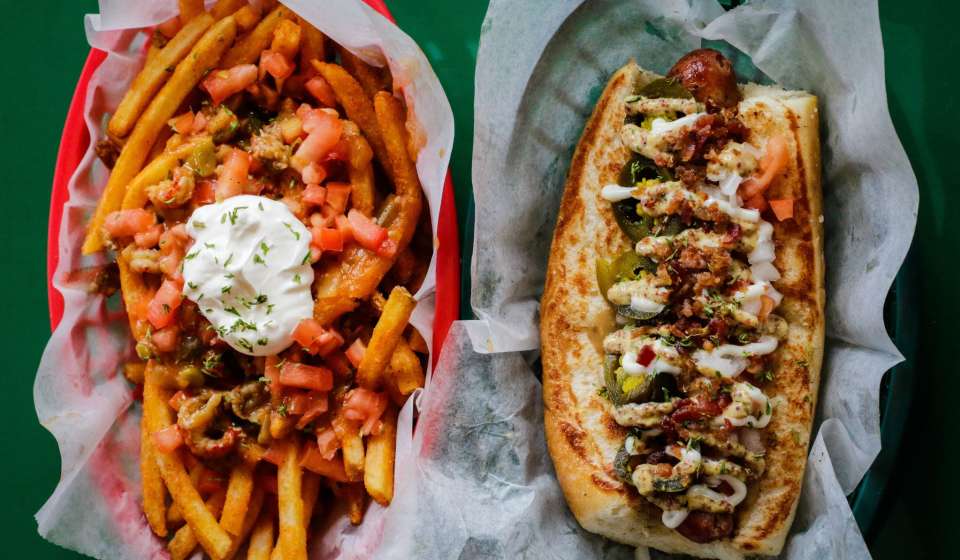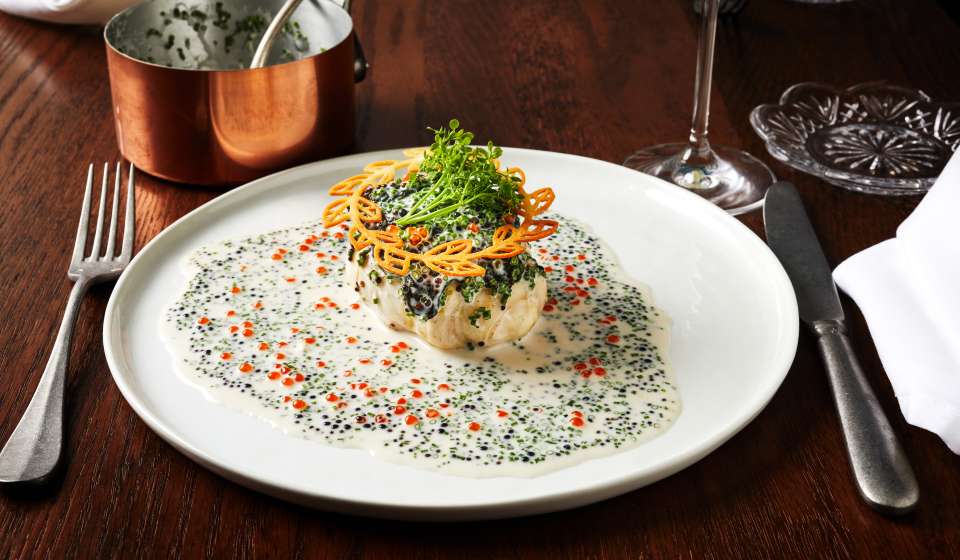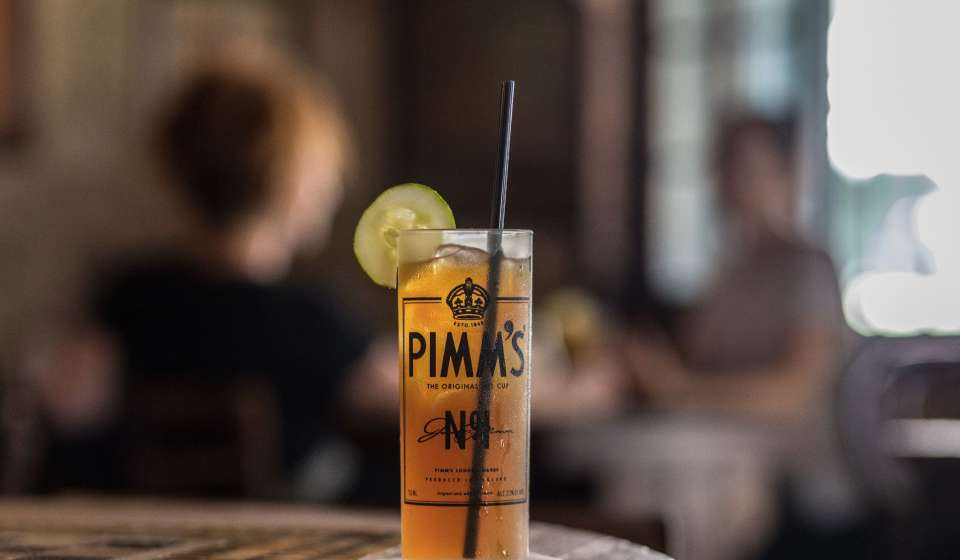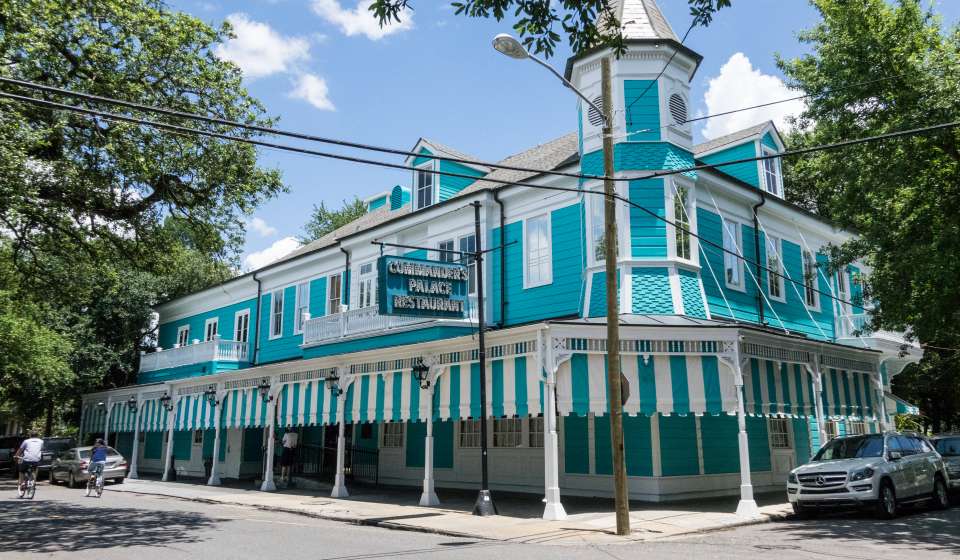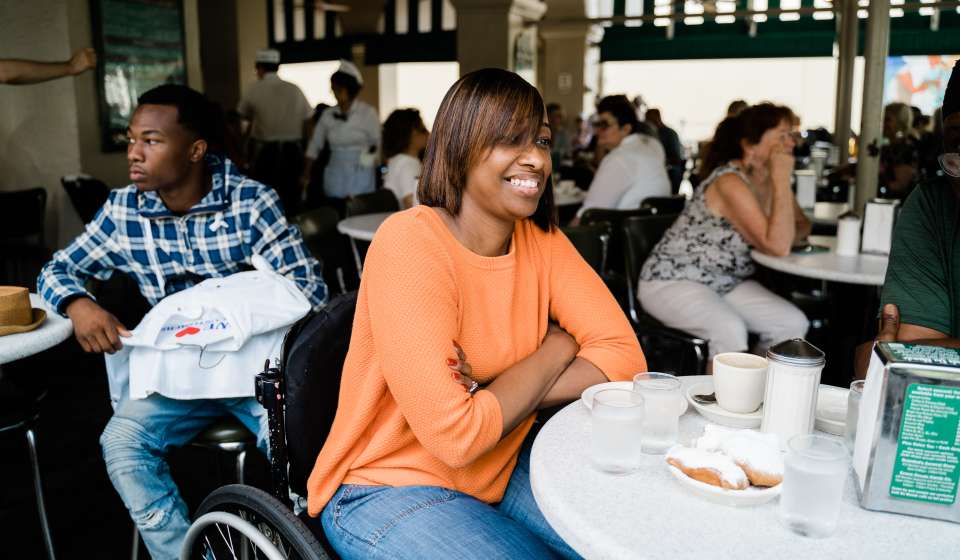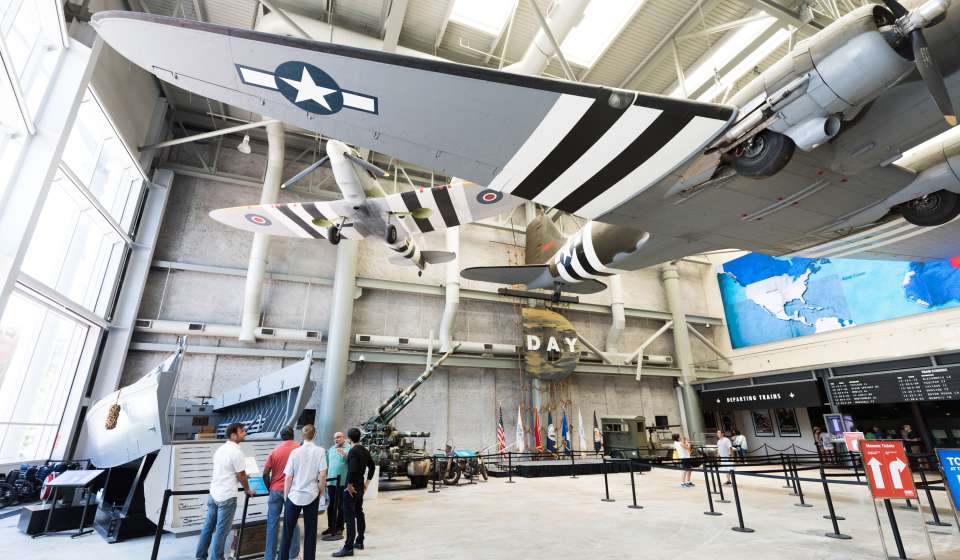
-
Wedding Tools
- Complimentary Planning Assistance
- Destination Wedding Guide Digital Copy
- Elopement Packages
- Marriage License & Legal Essentials
- Checklist
- Welcome Bag Ideas
- Second Lines
- The History of Wedding Umbrellas and More in New Orleans
- Wedding Cake Pulls
- Destination Wedding Guide Printed Copy
- Wedding Inspiration
-
Venues
-
Vendors
-
Pre & Post Wedding
- Wedding Inspiration
- Contact Us
-
Why New Orleans Is Built To Host
- Hotels
-
Meeting & Event Venues
-
Services & Planning Tools
-
Group PR & Marketing Tools
- Convention Calendar
- Testimonials
- Awards
-
Online RFP
- Availability Grid
- Contact Us
-
Things to Do
-
Eat
-
Drink
-
Stay
- Book a New Orleans Hotel
- Hotel Directory
- Bed And Breakfasts: Hotels - New Orleans & Company
-
Places To Stay: New Orleans Hotels - New Orleans & Company
- Saint Charles Avenue Hotels
- Luxury Hotels
- Garden District Hotels
- French Quarter Hotels and Lodging
- Downtown/Central Business District Hotels and Lodging
- Bourbon Street Hotels
- Green Hotels
- Bourbon Street Balcony Hotels - New Orleans & Company
- Haunted Hotels in New Orleans
- Pet-Friendly Hotels
- Historic Hotels
-
Calendar
-
Trip Planning Tools
- Insider's Blog
- LOVENOLA.TV 24/7 Broadcast
-
Weddings
-
Wedding Tools
- Complimentary Planning Assistance
- Destination Wedding Guide Digital Copy
- Elopement Packages
- Marriage License & Legal Essentials
- Checklist
- Welcome Bag Ideas
- Second Lines
- The History of Wedding Umbrellas and More in New Orleans
- Wedding Cake Pulls
- Destination Wedding Guide Printed Copy
- Wedding Inspiration
-
Venues
-
Vendors
-
Pre & Post Wedding
- Wedding Inspiration
- Contact Us
-
Wedding Tools
-
Meeting Planners
-
Why New Orleans Is Built To Host
- Hotels
-
Meeting & Event Venues
-
Services & Planning Tools
-
Group PR & Marketing Tools
- Convention Calendar
- Testimonials
- Awards
-
Online RFP
- Availability Grid
- Contact Us
-
Why New Orleans Is Built To Host
-
Groups
-
Travel Professionals
-
Membership
-
Press and Media
- Community
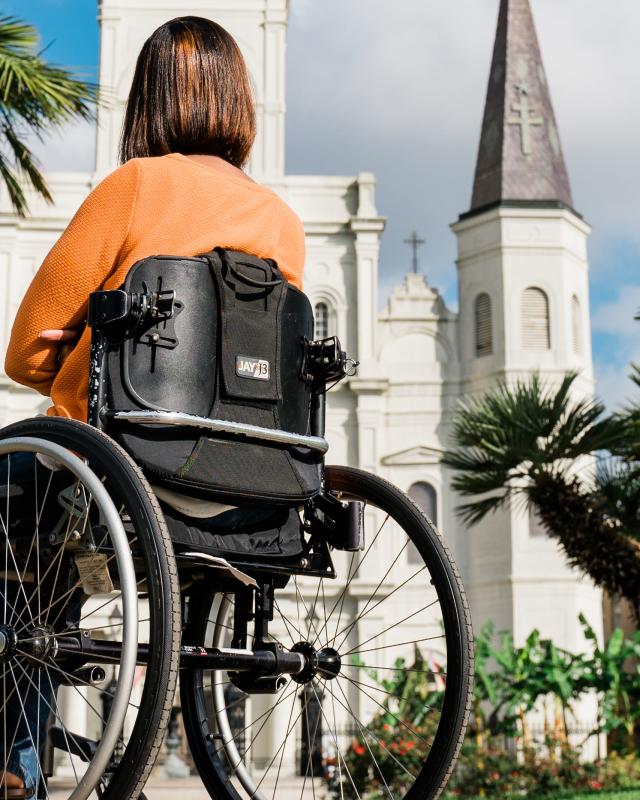

Wheelchair-Friendly Guide to New Orleans
Experience the Best of NOLA’s ADA-Compliant Attractions, Restaurants and More
There’s a common saying that you’ll hear from time to time in New Orleans— “Laissez Les Bons Temps Rouler”—which means “let the good times roll.” The Crescent City welcomes everyone and wheelchair users will find having fun and truly enjoying the city is easy.
New Orleans knows how to throw a party and every visit feels like a celebration. While Mardi Gras rules as one of the city’s most famous events, there are more than 130 festivals held throughout the year. Check the festival calendar for a one-of-a-kind occasion—many don’t cost a dime.
Foodies may find August or September an appealing time to visit. Dozens of restaurants offer prix-fixe brunch, lunch and dinner menus during the annual COOLinary New Orleans, which runs the entire month of August, followed closely by Restaurant Week New Orleans which takes place in early September. Make reservations well in advance of your trip. Typical participants include everything from culinary institutions such as Commander’s Palace to innovative newcomers like Public Service inside the historic NOPSI Hotel.
French Quarter
The heart and soul of New Orleans is its oldest neighborhood—the French Quarter or Vieux Carre (meaning “old square”). Founded by the French in 1718, the historic buildings with stepped entrances, narrow doors and no elevators can pose an obstacle for those who use mobility devices. Cracked and broken sidewalks require wheelchair users to move cautiously.
Even with that in mind, there’s still plenty to see and enjoy throughout the French Quarter. Meander through the area. Admire the architecture. Stop for a cocktail. The historic Hotel Monteleone with its rotating carousel bar is a favorite spot for locals and visitors. Snag a table beside the window and order a Vieux Carre—the drink was invented here. Despite its age, the hotel does have accessible guest rooms.
Jackson Square sits in the heart of the Quarter. For more than 50 years, artists gather here to create and sell their work which hangs on the iron fence surrounding the square. Many afternoons you’ll hear musicians entertaining the crowds.
At the center stage stands the majestic St. Louis Cathedral (Cathedral-Basilica of St. Louis King of France). The nation’s oldest continually operating cathedral is also the city’s most recognized landmarks. An architectural gem, the trio of soaring steeples tower above its historic neighbors, the Cabildo and The Presbytere. Use the ramped entrance with an electric door on the West side to enter the Cathedral.
Sample some of the city’s best restaurants within a half mile of Jackson Square. Make a reservation at Mr. B’s Bistro (accessible entrance through the parking garage), Arnaud’s (the bar is inaccessible) book a table in the Jazz Bistro room where a trio performs every night, GW Fins, and nearby Domenica (accessible entrance through the Roosevelt Hotel next door).
Another way to savor New Orleans cuisine is by attending a cooking class. Skilled chefs weave cooking instructions along with entertaining history at the New Orleans School of Cooking demonstration classes. Traditional Cajun and Creole dishes—gumbo, crawfish étouffée and jambalaya are served with classic desserts. Check the website’s calendar for the specific menu. Daily classes are conducted inside a renovated molasses warehouse, there is one step at the entrance. If needed, call in advance and the staff will set up a portable ramp. You eat what is prepared and receive recipes to take home.
Located across the street from Jackson Square, a green-and-white striped awning signals you’ve arrived at Café Du Monde, famous for lip-smacking beignets and coffee laced with chicory, traditionally served au lait (half coffee and half hot milk). Nab an outdoor seat near the railing; there’s usually a mime or musician performing nearby.
Browse for art made by locals at the Dutch Alley Artist’s Co-op located less than a block away from Café Du Monde. The shop contains a wonderful assortment of jewelry, paintings, stained glass, photos, hats, cards and more. A ramp provides access. Another spot for shopping, the French Market, contains food stalls, flea market finds and souvenirs. Open daily year round, the market is wheelchair accessible.
Serious bargain shoppers can find an assortment of name brand merchandise at the Outlet Collection at the Riverwalk. Pick up a new Fossil watch or perhaps a French press from Le Creuset. A companion restroom is located on the second floor. Have a snack at the large food court with views of the Mississippi River. For authentic Cajun cuisine and the best charbroiled oysters in the city, head to Drago’s Seafood Restaurant (located inside the Hilton Riverside Hotel). Step outside and take a ride on the Paddlewheeler Creole Queen. A lift transports wheelchair users to all three levels.
A hotel located in the French Quarter or Central Business District (CBD) makes for a convenient home base. A few with wheelchair accessible guest rooms include the Hyatt Centric French Quarter, Loews, and Aloft.
Warehouse District
The ever-expanding National World War II Museum focuses on why the war was fought, how it was won and what it means. The museum features immersive exhibits, poignant oral histories, multimedia experiences, and a collection of artifacts.
The six-acre campus has five pavilions with themed restaurants and entertainment. Check the calendar for special events, lectures, exhibits, and entertainment. The completely accessible museum provides a limited number of wheelchairs for use on the premises.
Steps from the World War II Museum, you’ll find the Contemporary Arts Center of New Orleans (CAC) and the Ogden Museum of Southern Art. Both facilities are completely wheelchair accessible and offer a calendar of innovative art, as well as, performances. For assistance with special seating at the CAC, call (504) 528-3805. Snag a front-row seat at the Ogden After Hours, every Thursday evening when locals perform.
Dine at a wide variety of wheelchair-friendly establishments from the casual Ugly Dog Saloon to Cochon Butcher and the flagship Emeril’s or Compere Lapin inside the Old 77 Hotel & Chandlery, which also has wheelchair-accessible guest rooms.
Uptown
Take a drive past majestic mansions on St. Charles Avenue to reach the Audubon Zoo. The compact zoo — with beautifully landscaped paths, historical architecture, and sculptures — can be easily explored in an afternoon. The wheelchair-accessible Swamp Train takes visitors on a scenic journey every 30 minutes and makes three stops. For $5, you can ride all day.
The zoo is near Tulane University which houses the free Newcomb Art Museum. Exhibition tours are given every Thursday and the second Saturday of every month at noon in the wheelchair-accessible galleries. If you are visiting New Orleans in the summer, check out Tulane Summer Lyric Theatre. For more than fifty years, they’ve wowed audiences with spectacular musicals. The renovated auditorium seating accommodates wheelchair users.
Stop by The Pontchartrain Hotel and ride an elevator to the Hot Tin Rooftop Bar with indoor and outdoor seating (tip: there is one elevator that goes all the way to the bar, and the other stops at a lower floor with stairs. Check with the front desk to make sure you know which elevator is the right one!). The name and 1940s decor pay homage to American playwright Tennessee Williams, who lived at the property while writing A Streetcar Named Desire. Make dinner reservations at Jack Rose and leave room for one of New Orleans’ iconic desserts—Mile High Pie.
Mid-City
Stretching one mile wide and three miles long, New Orleans City Park’s moss-draped live oak trees and accessible walking paths provide a tranquil setting. The park is home to two of the city’s most beloved attractions: The New Orleans Museum of Art (NOMA) and The Besthoff Sculpture Garden. NOMA houses an impressive collection of American and French art, photos and glass. A ramp on the right side of the museum near Cafe NOMA provides access. Complimentary wheelchairs may be borrowed by leaving your ID at the front desk in the coat check room.
Don’t miss the 11.5-acre Sydney and Walda Besthoff Sculpture Garden with more than 90 pieces of art set amongst mature pines, magnolias and live oaks. Admission to the garden is free and paths are wheelchair accessible.
The New Orleans Botanical Garden was added to the park in 1936 as a Great Depression WPA (Works Progress Administration) project. With more than 2,000 varieties of plants, the most stunning displays are from April to early June and in October. Local musicians perform live concerts inside the Pavilion of Two Sisters on Thursdays at Twilight (January to November). Much of the garden is wheelchair accessible.
When it’s time to eat, head to Parkway Bakery & Tavern—established in 1911—some folks believe they have the best po-boys in the entire state. Ramps, a lift, and accessible parking accommodate wheelchair users.
For more information about accessibility in New Orleans, visit our Wheelchair FAQ page.
About Barbara and Jim Twardowski
Lucky to live less than an hour from New Orleans, the authors spend many a weekend exploring the city. Together, they write about destinations, accommodations, cultural attractions, food, and Boomer trends. Barbara uses a wheelchair and Jim is an RN so they frequently cover accessible travel.


